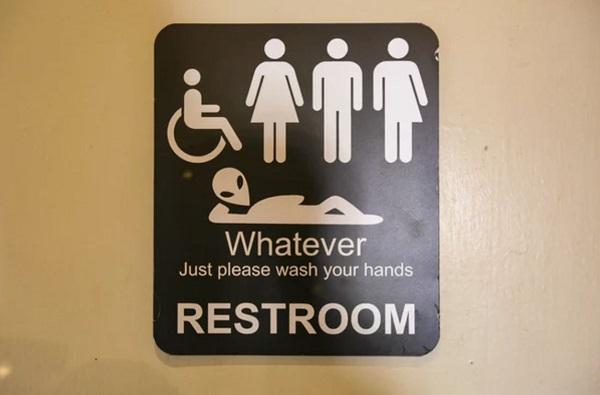
How do you know if you have lower urinary tract symptoms and an overactive bladder?
Over ¾ of women report that they have experienced one or more Lower Urinary Tract Symptoms (LUTS)1. More than ½ of American women report urinary incontinence (UI), and approximately 17% of women over the age of 18 years report symptoms of overactive bladder (OAB)2, 3. It is also believed that most women underreport their bladder symptoms due to embarrassment and false notions that it is a normal part of aging4, 5, 6.
Lower urinary tract symptoms include incomplete bladder emptying, urine dribbling after you finish urination, persistent drip of urine after completion of urination and/or urinary incontinence. Overactive bladder symptoms consist of urinary urgency (the need to get to a restroom quickly), with or without incontinence, urinary frequency, and frequent nighttime urination (waking more than 1x/night). These symptoms can negatively impact a woman’s life. One study found that women with Lower Urinary Tract Symptoms reported several impacts on quality of life including decreased sleep, work productivity, and physical/sexual activity7.
What can I do about it?
There is a link between toileting behaviors and Lower Urinary Tract Symptoms as well as bladder dysfunction. These links include premature urination (urinating without a need or urge), straining to initiate urination or to urinate faster, or delaying urination until able to access a prefered toilet. Many women worry about the cleanliness of public restrooms and will either delay their urination or will do a “just in case” pee before leaving their home. Also many women report when having to use a public restroom they hover over the toilet to avoid touching the seat, which does not allow for full bladder emptying. This is because the pelvic floor muscles are unable to fully relax when in this partial squat position. Another common toileting behavior is straining in order to push urine out faster and to avoid time spent on the toilet8, 9, 10. If these behaviors could be corrected early it could stop the progression of these symptoms and reduce the negative health outcomes that can develop over time9.
In a survey, 78.4% of women denied talking to their health care provider about urinary or bladder symptoms and 61.1% denied that their provider asked about changes in urination at their last visit11. It is important that women feel comfortable discussing their urinary and bladder symptoms with their providers so they are able to seek help. It is also important that healthcare providers are screening for bladder health as well as providing a secure environment for patients to feel comfortable discussing their concerns. If you have any of the above symptoms seek out a pelvic floor physical therapist. This is what we do all day and love talking about these topics! Contact us here for an in-office or Telehealth session.
References
1. Coyne KS, Sexton CC, Thompson CL, et al. The prevalence of lower urinary tract symptoms (LUTS) in the USA, the UK and Sweden: results from the Epidemiology of LUTS (EpiLUTS) study. BJU Int 2009;104(3): 352–360.
2. Markland AD, Richter HE, Fwu CW, et al. Prevalence and trends of urinary incontinence in adults in the United States, 2001 to 2008. J Urol 2011;186(2):589–593
3. National Association for Continence. Overactive bladder. 2015. Available at http://www.nafc.org/overactive-bladder. Accessed November 19, 2017.
4. Irwin DE, Kopp ZS, Agatep B, et al. Worldwide prevalence estimates of lower urinary tract symptoms, overactive bladder, urinary incontinence and bladder outlet obstruction. BJU Int 2011;108(7):1132–1138.
5. Milsom I, Abrams P, Cardozo L, et al. How widespread are the symptoms of an overactive bladder and how are they managed? A population-based prevalence study. BJU Int 2001;87(9):760–766.
6. Wallner LP, Porten S, Meenan RT, et al. Prevalence and severity of undiagnosed urinary incontinence in women. Am J Med 2009;122(11): 1037–1042
7. Coyne KS, Sexton CC, Kopp ZS, et al. The impact of overactive bladder on mental health, work productivity and health-related quality of life in the UK and Sweden: results from EpiLUTS. BJU Int 2011;108(9):1459–1471.
8. Wang K, Palmer MH. Women’s toileting behaviour related to urinary elimination: concept analysis. J Adv Nurs 2010;66(8):1874–1884
9. Sjogren J, Malmberg L, Stenzelius K. Toileting behavior and urinary tract symptoms among younger women. Int Urogyn J 2017;1677–1684.
10. Moore KH, Richmond DH, Sutherst JR, et al. Crouching over the toilet seat: prevalence among British gynaecological outpatients and its effect upon micturition. BJOG 1991;98(6):569–572.
11. Angelini, K. J., Newman, D. K., & Palmer, M. H. (2019). Psychometric Evaluation of the Toileting Behaviors. Female Pelvic Medicine & Reconstructive Surgery, 1. doi:10.1097/spv.0000000000000711
